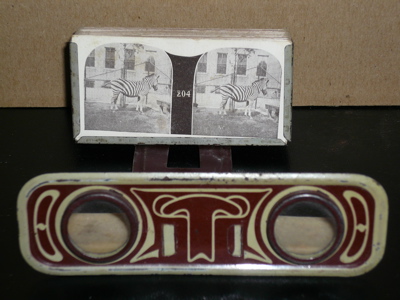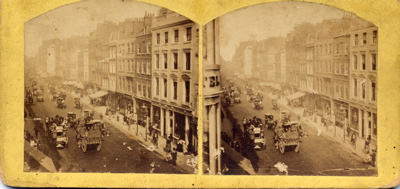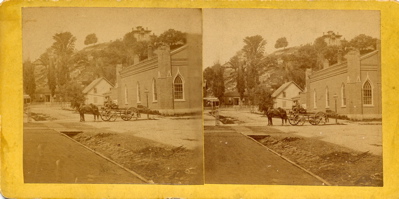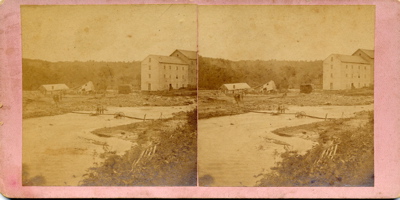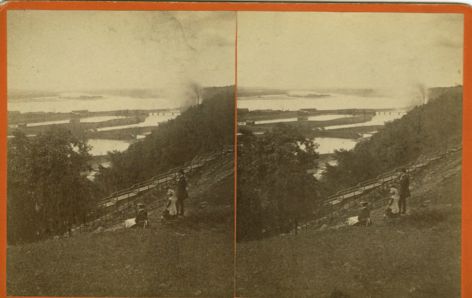Encyclopedia Dubuque
"Encyclopedia Dubuque is the online authority for all things Dubuque, written by the people who know the city best.”
Marshall Cohen—researcher and producer, CNN
Affiliated with the Local History Network of the State Historical Society of Iowa, and the Iowa Museum Association.
STEREOSCOPIC CARDS
Stereoscopic Cards. Stereoscopy, stereoscopic imaging or 3-D (three-dimensional) imaging is any technique used for recording three-dimensional visual information or creating the illusion of depth in an image. The illusion of depth is created by presenting a slightly different image to each eye. It was invented by Sir Charles Wheatstone in 1840.
Traditional stereoscopic photography consisted of creating a 3-D illusion starting from a pair of 2-D images. The easiest way to create depth perception in the brain is to provide the eyes of the viewer with two different images, representing two perspectives of the same object, with a minor deviation similar to the perspectives that both eyes naturally receive in binocular vision. To reduce eyestrain and distortion, each of the two 2-D images were presented to each eye of the viewer so that any object at infinite distance seen by the viewer would be seen by that eye while it is oriented straight ahead, the viewer's eyes being neither crossed nor diverging. When the picture contained no object at infinite distance, such as a horizon or a cloud, the pictures were spaced closer together.
At the turn of the century, stereoscopic cards were purchased from a vendor. Taken home, the cards provided people the opportunity to "visit" places far away.
In Dubuque, stereoscopic views of the area were sold at the gallery of Samuel ROOT on the corner of 8th and Main in the Sanford Block. Space on the back of the card could be used to label the scene. Advertising on the back of the cards stated, "Outside views made to order.""


